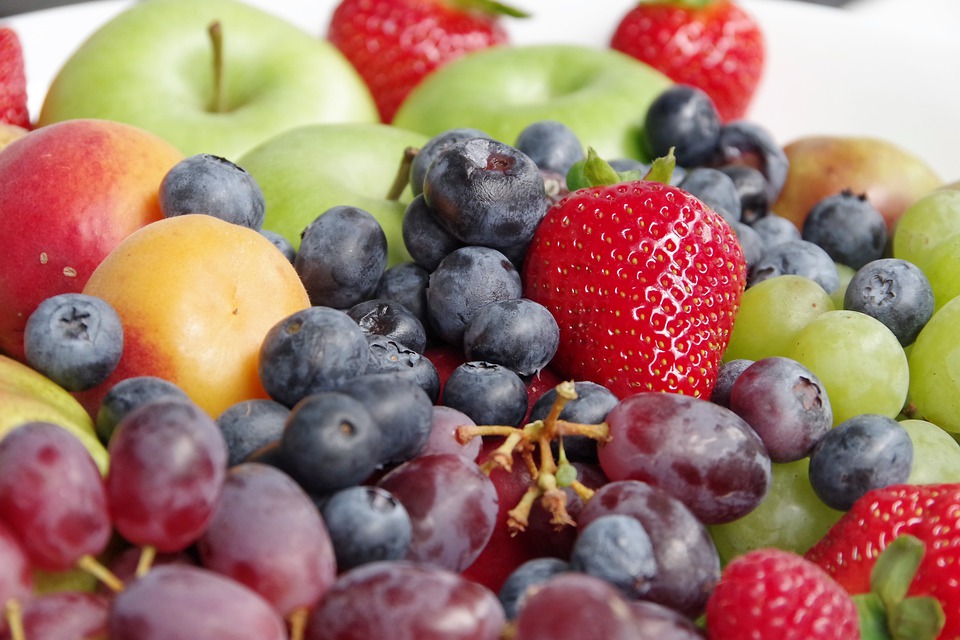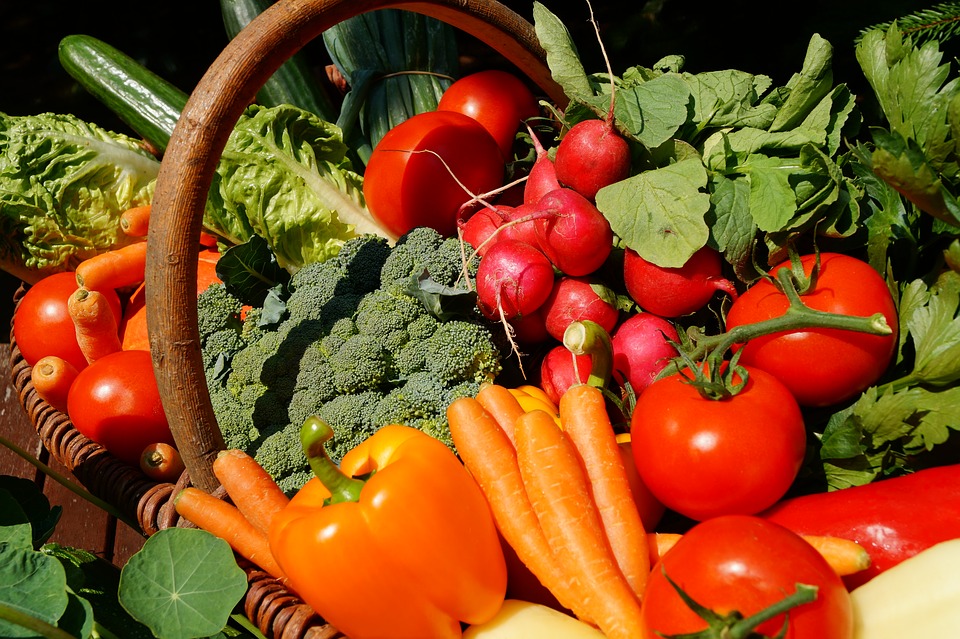Differences Between Fruits and Vegetables
One of the key differences between fruits and vegetables is that fruits are the ripened ovaries unique to angiosperms while vegetables are edible plant parts.
A meal cannot be a balanced one without vegetables and fruits. Fruits and vegetables are parts of plants. Fruit is the matured ovary of a flowering plant (angiosperms). There are seeds inside fruits. Vegetables are edible plant parts. They can be leaves, stalks, roots, tubers, bulbs and flowers. For a common man, it is not difficult to differentiate fruits from vegetables. Therefore, in simple words, fruit is the sweet and succulent product of a plant while the edible plant parts are vegetables. However, botanists may disagree with this generalization. According to the botanical definition, tomatoes, pumpkins, cucumbers, and zucchini are fruits as they contain seeds. But we consider them vegetables. Therefore, this article attempts to discuss the differences between fruits and vegetables according to both scientific and common backgrounds.
CONTENTS
1. Overview and Key Difference
2. What are Fruits
3. What are Vegetables
4. Similarities Between Fruits and Vegetables
5. Side by Side Comparison – Fruits vs Vegetables in Tabular Form
6. Summary
What are Fruits?
In a broader sense, a fruit is a part of a plant that contains seeds. In flowering plants, it is the ripened ovary which protects its seeds. Seeds are the dispersing units of angiosperms. Animals and birds eat fruits and mediate the dispersion of seeds into different environments. Therefore, fruits are the flashy parts of plants which are usually sweet and tastier. Most fruits are available for human use in raw form.

Figure 01: Fruits
The biological definition of a fruit is stricter and debates about the status of certain fruits such as like tomato are still going on. In a biological sense, many fruits are true fruits while some are culinary fruits. We use some true fruits like tomato, cucumber, peas and eggplant as vegetables as they are not sweet. In technical terms, cereal grains are also a type of fruit. But we consider them as edible seeds. Botanists categorize fruits into many categories such as simple fruits, aggregate fruits and multiple fruits based on the flower type from which they originate.
What are Vegetables?
There is no exact definition for vegetables. But we know them as edible parts of the plants. However, it should be remembered fruits and seeds are also edible parts of plants. In addition to fruits and seeds, vegetables are the edible parts of plants. It could also be leaves as in the case of spinach, roots as in the case of radish and flowers as in cauliflower.

Figure 02: Vegetables
As vegetables have no scientific definition, traditions and cultures play a great role in deciding the status of vegetables. For instance, many people consider mushrooms as vegetables. Some others consider them a separate food class. When considering avocado, certain countries treat it as a fruit while other countries treat it as a vegetable. Some vegetables are available in raw form, like carrots and radish whereas some others such as bitter gourd and ladyfinger must be cooked before eating.
What are the Similarities Between Fruits and Vegetables?
- Fruits are vegetables are edible parts of plants.
- They are nutritional.
- Both are readily available.
- Moreover, both can be used in the raw form.
- Some fruits are considered as vegetables.
- A balanced meal should contain both fruits and vegetables.
What are the Differences Between Fruits and Vegetables?
Fruits have an exact botanical definition, while vegetables have no exact definition. Vegetable is any edible part of a plant. Therefore, fruits can also be considered as vegetables, but we can differentiate them based on the presence of seeds. Fruits are those parts of plants which contain seeds, but vegetables do not necessarily need to have seeds. Fruits usually have a sugar type called fructose, which gives them a sweet taste, while vegetables are usually savoury.
Furthermore, we can use fruits in raw form; however, we can only use some vegetables in raw form, some need cooking before human consumption. These are the key differences between fruits and vegetables.

Summary – Fruits vs Vegetables
Fruits and vegetables are part of our daily life; we use them in different forms, either after cooking or in raw form, like salads. Fruits and vegetables are natural sources of vitamins, fibres and many minerals. These colourful ingredients not only make our food good looking, but they are also essential for the proper function of our body. Fruits, vegetables, their juices and extracts are part of our everyday life. Their nutritional value makes them equally important to us. However, there are several differences between fruits and vegetables. Fruits are known for their sweetness whereas vegetables give a savoury taste. Fruits protect seeds while vegetable can be any part of a plant. Their uses also make them different from each other, but both are important for the existence of life on this planet.
Reference:
1. “Fruit and Vegetables.” Better Health Channel, Department of Health & Human Services, 8 Nov. 2018, Available here.
Image Courtesy:
1. “4255924” (CC0) via Pixabay
2. “3386212” (CC0) via Pixabay
ncG1vNJzZmivp6x7pbXFn5yrnZ6YsqOx07CcnqZemLyue8OinZ%2Bdopq7pLHSZpmerKeasq95xausoqyjYq6vsIyvnKCdpJavrbHSaA%3D%3D